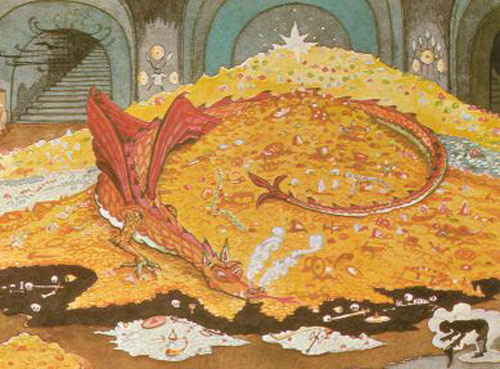
Nothing spells “Fantasy” as clearly as the image of a dragon does. And isn’t it strange that every one of us will have a fairly good idea of what a dragon looks like, even though I imagine few of us will ever actually have seen a real one?

Dragons exist, and have existed, in many of the world’s cultures. In Europe, they are generally associated with evil, maliciousness and mortal danger – as well as with eating virgins, and guarding treasure. They spout fire. They are defeated by a valiant knight, such as St George on his white horse, freeing the virgin about to be eaten – the quintessential Damsel in Distress.

J.R.R. Tolkien picked up on the myth of the dragon slayer who defeats the worm guarding a pile of treasure, when he put old Smaug on top of his pile of Dwarven gold inside the Lonely Mountain. He turned the dumb animal of chaos into a sly, malevolent, and perfectly intelligent being – and instead of a shining knight on a white horse, he sent a bunch of Dwarves and a Hobbit, though ultimately the creature is defeated by a well-aimed arrow. A team effort, rather than a single heroic act.

From there, dragons – both malevolent and helpful – have become a staple of modern fantasy literature. Anne McCaffrey, Ursula Le Guin and, more recently, George R. R. Martin and Robin Hobb have made dragons central to their fictional universes. In their writings, dragons become something of a symbol of female empowerment. The damsel is no longer distressed by the dragon: they are allies. Knights in shining armour, watch out!

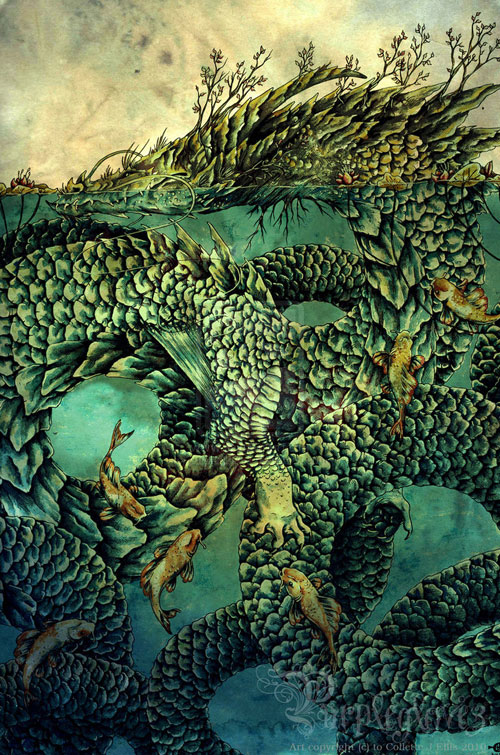
In Asia, and particularly in Chinese culture, dragons are associated with water, rather than fire. They are a symbol of power, majesty and wisdom. They bring good luck. In the Japanese anime movie “Spirited Away”, it is a young damsel who frees a river spirit from his curse: she transforms the handsome young man back into his original dragon form.

The association of dragons with water is not entirely alien to European tradition, either. Damsels do seem, on the whole, to have a better relationship with dragons than male hero types – be they knights in shining armour a la St George, or rugged Celtic warriors like the one in the following illustration by John Howe. This is a page from “A Diversity of Dragons”, a collaboration with Anne McCaffrey, which amounts to an illustrated encyclopedia of dragons.
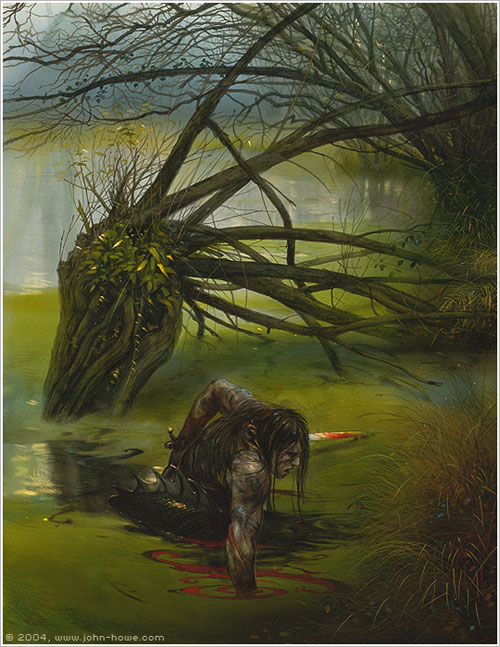
John Howe’s illustration is also a fine example of the (almost) “invisible dragon” – possibly related to the “invisible spaceship”, and “invisible alien monster”, which have been so successfully featured in certain episodes of “Dr Who”. But, I digress.
Ursula Le Guin sees dragons as “creatures of fire and air”, in opposition to us earth- and waterbound humans. There certainly is something airy, almost fragile, about the next two illustrations: rather than brute strength, these dragons have a flexible wilyness: the strength of steel cords, rather than that of a bulldozer.

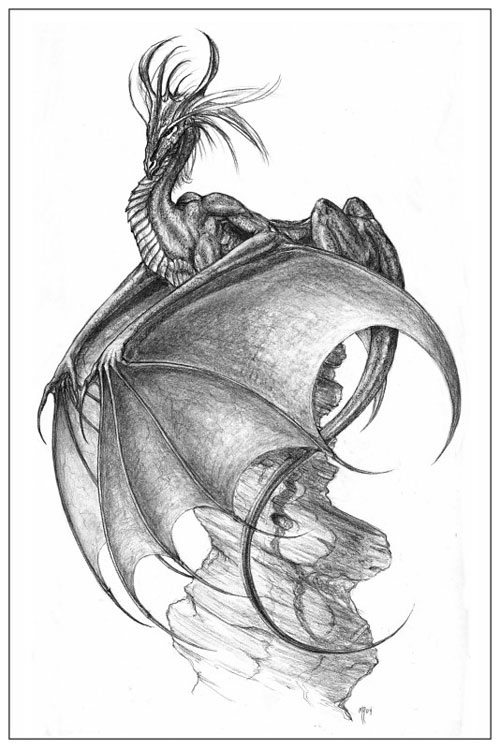
Dragons and body adornment seem to go hand in glove: dragons certainly are a popular motive for tattoo designs! And much has been said about the enchantment of a dragon eye’s baleful stare.


It has been said that dragons enjoy bathing in their hoards of stolen gold until their skin becomes completely encrusted with coin and gems. But, just like the dragon slayer Siegfried’s impermeable skin had one weak spot, so also does the crust of a dragon always have one vulnerability, the soft spot where a well-aimed arrow can enter, and hurt or even kill.

This image of a battle with a dragon seems quite baroque in its drama and colour. There is more than a hint of the old imagery of the Archangel Michael conquering Lucifer. Indeed, the dragon is not always clearly distinguished from the snake – the one who whispered in Eve’s ear that she really ought to try that apple. And as we all know, since we’re read Harry Potter: people who can listen to and understand snakes, are not to be trusted!

And here, finally, is a fierce dragon in all his or her fire-spouting glory.

Images are copyright the respective artist, and may not be reproduced without their permission.



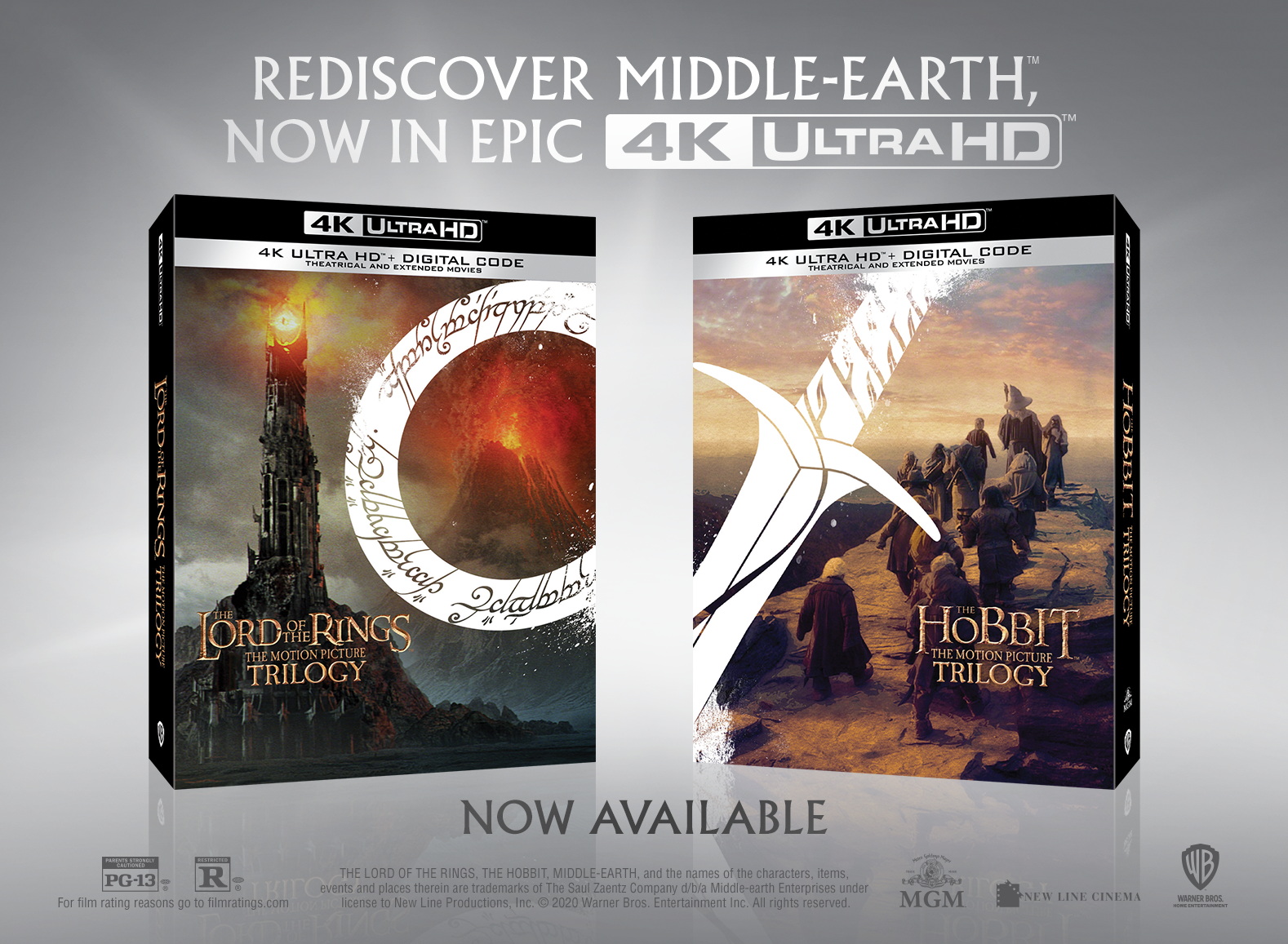






Dragons are a favorite of mine! Thanks for this post with such beautiful images!
In the ancient Peru, there was the legend of the “amaru”, a giant serpen – winged “llama” (a “llama” (iama) is a South American camelid). Like this example: https://genzoman.deviantart.com/art/Amaru-189362015
Thanks for pointing that out, I didn’t know about the Peruvian version. 🙂 There is also Quetzalcoatl of course, arguably another version of the dragon theme. In New Zealand, there are taniwha, which may or may not be related. 🙂